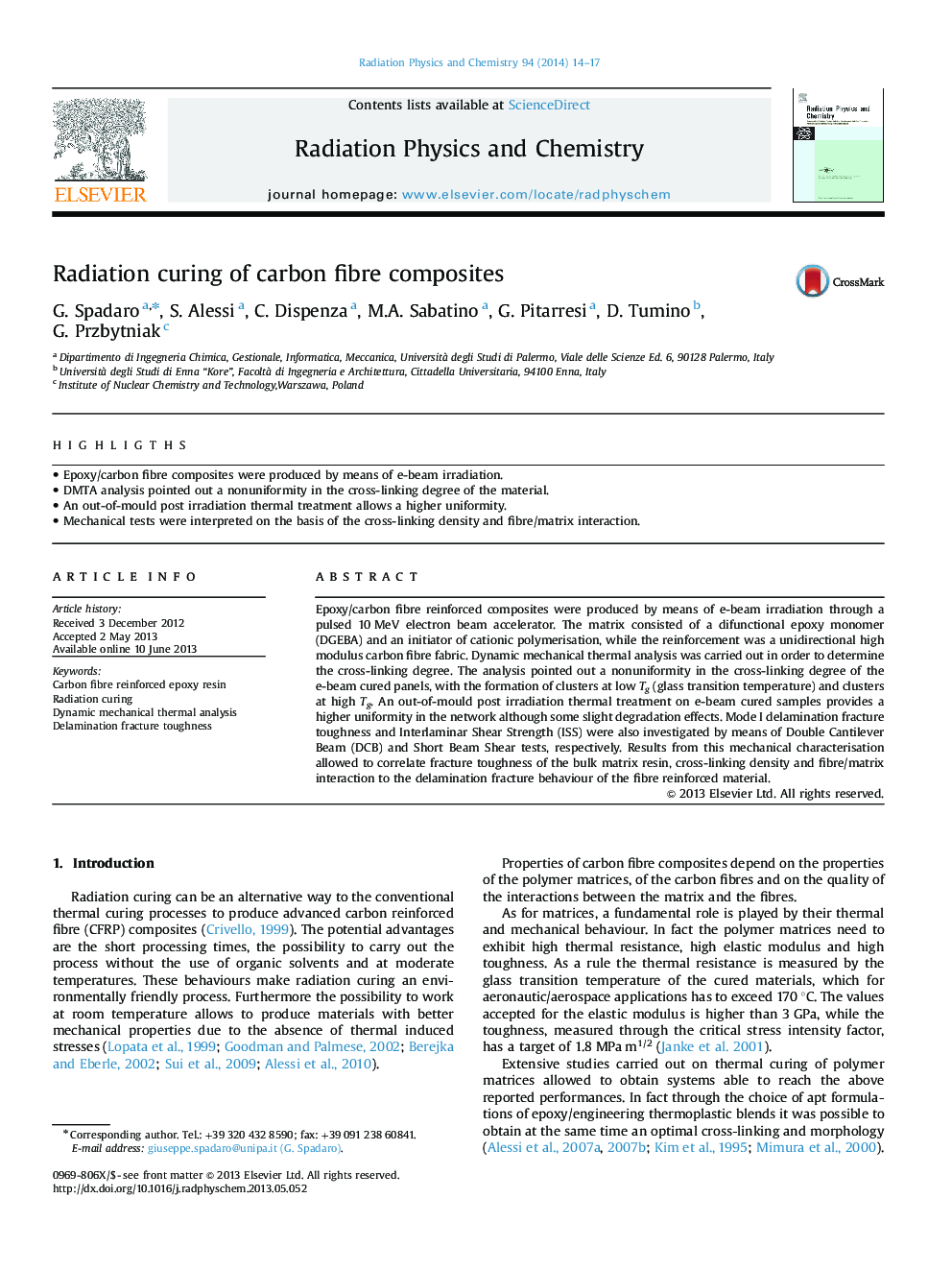| کد مقاله | کد نشریه | سال انتشار | مقاله انگلیسی | نسخه تمام متن |
|---|---|---|---|---|
| 1891343 | 1533530 | 2014 | 4 صفحه PDF | دانلود رایگان |
Highligths
• Epoxy/carbon fibre composites were produced by means of e-beam irradiation.
• DMTA analysis pointed out a nonuniformity in the cross-linking degree of the material.
• An out-of-mould post irradiation thermal treatment allows a higher uniformity.
• Mechanical tests were interpreted on the basis of the cross-linking density and fibre/matrix interaction.
Epoxy/carbon fibre reinforced composites were produced by means of e-beam irradiation through a pulsed 10 MeV electron beam accelerator. The matrix consisted of a difunctional epoxy monomer (DGEBA) and an initiator of cationic polymerisation, while the reinforcement was a unidirectional high modulus carbon fibre fabric. Dynamic mechanical thermal analysis was carried out in order to determine the cross-linking degree. The analysis pointed out a nonuniformity in the cross-linking degree of the e-beam cured panels, with the formation of clusters at low Tg (glass transition temperature) and clusters at high Tg. An out-of-mould post irradiation thermal treatment on e-beam cured samples provides a higher uniformity in the network although some slight degradation effects. Mode I delamination fracture toughness and Interlaminar Shear Strength (ISS) were also investigated by means of Double Cantilever Beam (DCB) and Short Beam Shear tests, respectively. Results from this mechanical characterisation allowed to correlate fracture toughness of the bulk matrix resin, cross-linking density and fibre/matrix interaction to the delamination fracture behaviour of the fibre reinforced material.
Journal: Radiation Physics and Chemistry - Volume 94, January 2014, Pages 14–17
